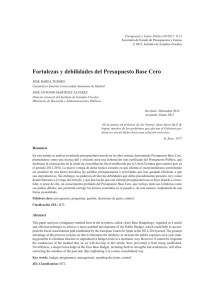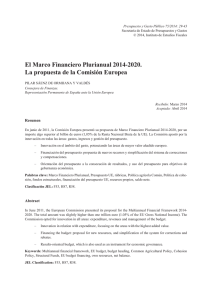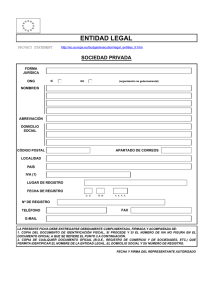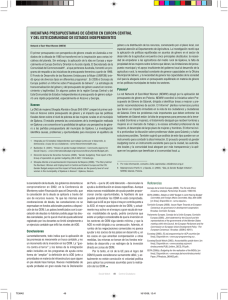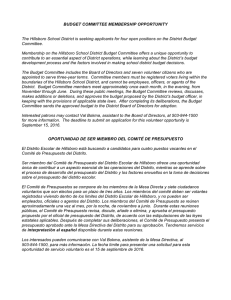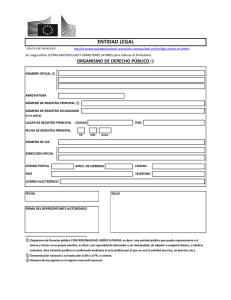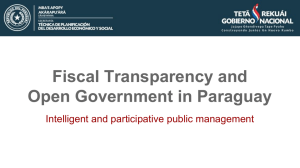Budget reform in Austria: From traditional to modern budgeting
Anuncio
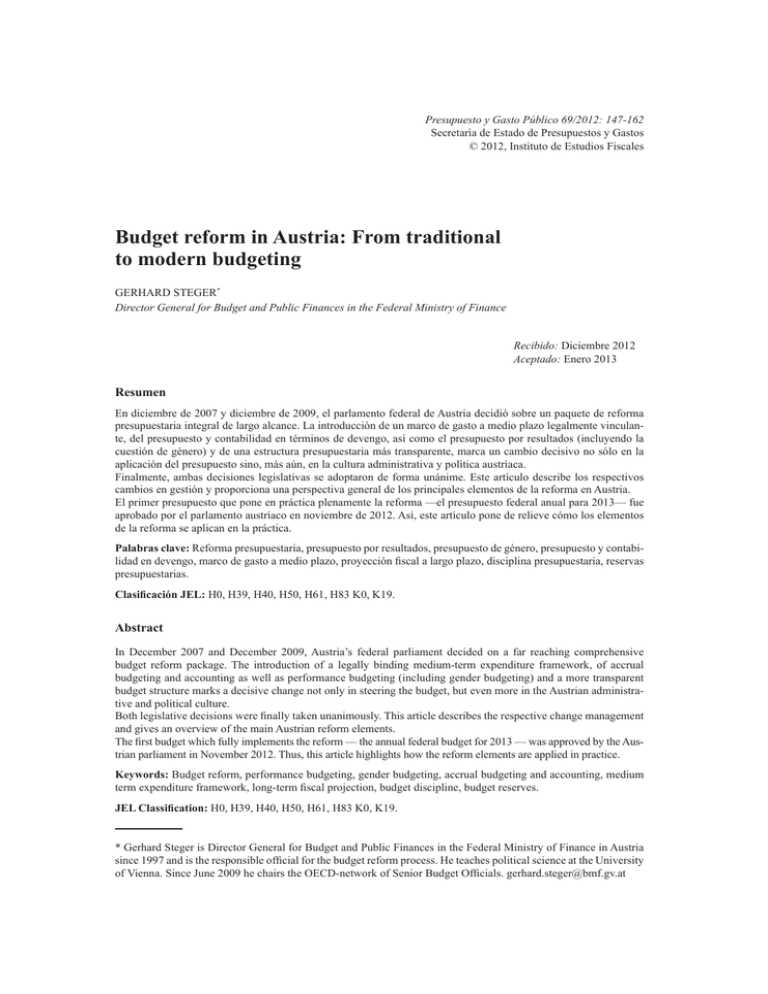
Presupuesto y Gasto Público 69/2012: 147-162 Secretaría de Estado de Presupuestos y Gastos © 2012, Instituto de Estudios Fiscales Budget reform in Austria: From traditional to modern budgeting GERHARD STEGER* Director General for Budget and Public Finances in the Federal Ministry of Finance Recibido: Diciembre 2012 Aceptado: Enero 2013 Resumen En diciembre de 2007 y diciembre de 2009, el parlamento federal de Austria decidió sobre un paquete de reforma presupuestaria integral de largo alcance. La introducción de un marco de gasto a medio plazo legalmente vinculan­ te, del presupuesto y contabilidad en términos de devengo, así como el presupuesto por resultados (incluyendo la cuestión de género) y de una estructura presupuestaria más transparente, marca un cambio decisivo no sólo en la aplicación del presupuesto sino, más aún, en la cultura administrativa y política austríaca. Finalmente, ambas decisiones legislativas se adoptaron de forma unánime. Este artículo describe los respectivos cambios en gestión y proporciona una perspectiva general de los principales elementos de la reforma en Austria. El primer presupuesto que pone en práctica plenamente la reforma —el presupuesto federal anual para 2013— fue aprobado por el parlamento austríaco en noviembre de 2012. Así, este artículo pone de relieve cómo los elementos de la reforma se aplican en la práctica. Palabras clave: Reforma presupuestaria, presupuesto por resultados, presupuesto de género, presupuesto y contabi­ lidad en devengo, marco de gasto a medio plazo, proyección fiscal a largo plazo, disciplina presupuestaria, reservas presupuestarias. Clasificación JEL: H0, H39, H40, H50, H61, H83 K0, K19. Abstract In December 2007 and December 2009, Austria’s federal parliament decided on a far reaching comprehensive budget reform package. The introduction of a legally binding medium-term expenditure framework, of accrual budgeting and accounting as well as performance budgeting (including gender budgeting) and a more transparent budget structure marks a decisive change not only in steering the budget, but even more in the Austrian administra­ tive and political culture. Both legislative decisions were finally taken unanimously. This article describes the respective change management and gives an overview of the main Austrian reform elements. The first budget which fully implements the reform — the annual federal budget for 2013 — was approved by the Aus­ trian parliament in November 2012. Thus, this article highlights how the reform elements are applied in practice. Keywords: Budget reform, performance budgeting, gender budgeting, accrual budgeting and accounting, medium term expenditure framework, long-term fiscal projection, budget discipline, budget reserves. JEL Classification: H0, H39, H40, H50, H61, H83 K0, K19. * Gerhard Steger is Director General for Budget and Public Finances in the Federal Ministry of Finance in Austria since 1997 and is the responsible official for the budget reform process. He teaches political science at the University of Vienna. Since June 2009 he chairs the OECD-network of Senior Budget Officials. [email protected] 02 presupuesto N69.indd 147 25/2/13 17:00:01
